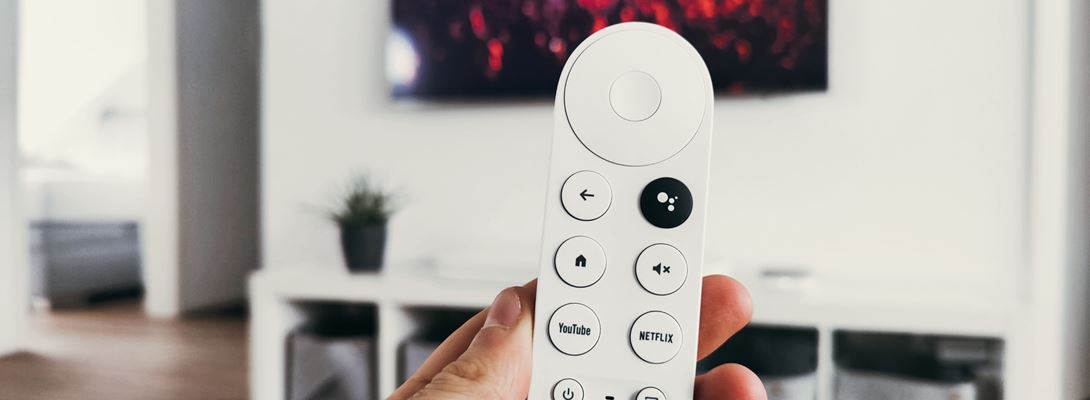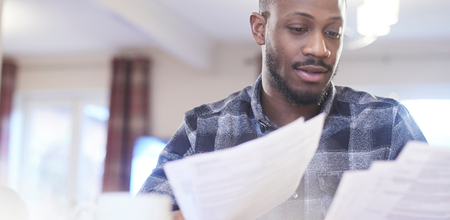You can save around £55 a year just by remembering to turn your appliances off standby mode.
Almost all electrical appliances can be turned off at the plug without upsetting their programming. You may want to think about getting a standby saver or smart plug which allows you to turn all your appliances off standby in one go.
Check the instructions for any appliances you aren’t sure about. Some satellite and digital TV recorders may need to be left plugged in so they can keep track of any programmes you want to record.
What does standby mode mean?
Basically, standby mode refers to any electronic device that isn’t switched on but is still receiving power from your electricity socket to allow it to continue running at a low level. The obvious example is your television. You may have switched it off via its remote, but it’s still drawing power from the electricity socket to allow it to respond to signals from the remote control. Another example is when you put your computer into sleep mode – it’s running on less energy, but it still requires power to maintain your current session and bring it back quickly when you wake the computer back up.
Should I turn plugs off at the wall?
Yes, it’s usually best to switch a plug off at the wall when your device isn’t in use. After you’re finished with the TV, computer or games console, switch everything off in the usual manner, then finally flick the electric socket’s switch to off to stop using unnecessary energy. Although individual appliances consume a fraction of what they usually do when in standby mode, the more devices you possess, the greater the cumulative effect of their continuing consumption on your energy bills.
Does leaving a plug socket on use electricity?
If your plug socket is switched on but nothing’s plugged in, the electrical current won’t flow through it as the plug isn’t there to complete the circuit. You don’t have to worry about meticulously turning every socket in the house to an off position if there are no devices plugged in.
However, if a device is plugged in and switched on, it’ll likely use electricity in standby mode unless there’s a physical on/off switch. This is because while your TV isn’t fully on, it’s ready to spring back to life at the touch of a button. Its ability to respond requires electricity, so to save energy you should turn the device off at the socket.
How much electricity does a TV use in standby?
The amount of energy consumed by devices on standby is difficult to measure accurately, because these days the amount is often miniscule – under 1 watt in many circumstances.
On its own this isn't a substantial amount of energy, but a household often has multiple devices left on standby, and this collective ‘background’ electricity consumption can quickly balloon. Televisions are one of the biggest collective contributors to this energy waste because most households never switch off their TVs at the wall.
How much does it cost to leave a TV on standby in the UK?
According to Energy Saving Trust, it’s estimated that the average UK household spends £30 per year leaving devices on standby.
What other devices should be turned off at the wall?
It’s not just TVs that should be unplugged from the wall if you want cheaper energy bills. Mobile phone chargers, stereos and games consoles are further examples of devices often left in standby. Games consoles in particular waste a lot of energy, because they’re often left in idle mode, which uses almost the same amount of power as active gameplay.
Laptops and desktop computers
When a desktop computer goes into sleep mode, it uses only a few watts of energy. Although it’s ideal to unplug the device and power it down completely, sleep mode is an energy-saving alternative to screen savers which use far more power. You can go to your computer settings to set up a timer for sleep mode in your preferences. This could be anywhere from five to ten minutes of inactivity. You’ll save plenty of energy during the day, but it’s still a good idea to shut down your PC overnight.
Today’s laptops are designed to be more energy-efficient, and can hold a charge for several hours or longer. A common way that people waste energy is by leaving them constantly plugged in, even when the laptop’s at full charge.
Mobile phones
Like TVs, mobile phone chargers are another device that’s frequently left on standby in UK households. Do you leave your charger plugged into the socket 24-7? Although this only uses a few watts of energy, it all adds up. Like laptops, mobile phones don’t need to be left plugged in when they’re at a full charge.
Many of us charge our phones overnight, but this wastes quite a lot of energy as most new phones finish charging within two hours. Consider charging your phone when you get home from work, or after dinner instead.
Games consoles
Video games consoles are a major electricity drain, particularly those consoles that use broadband. However, many newer models come with an energy-saving standby mode. For example, the Xbox Series X consumes 29 watts in instant resume ‘standby’ mode, but if you shift to the energy saving mode it’ll shut down fully. You won’t receive automatic updates in this mode, but game states are preserved and powering back on takes just 20 seconds.
Are there any devices that should be left in standby mode?
While most household gadgets can be switched off at the wall when not in use, there are a few exceptions. Fridges and freezers must always be left plugged in. A less obvious example is a set-top box for digital TV, which needs the flow of constant power to allow you to record programmes at home using the scheduler.
Leaving smart TVs in standby mode enables necessary software updates, and these modern designs only use minimal power. Similarly, some broadband routers need to be kept on 24/7 for overnight firmware updates and a more consistent performance. Check with your manufacturer if you’re not sure.
What are standby saver devices?
Finding it difficult to kick the standby habit? Don’t worry, you’re not the only one. Fortunately, standby savers are on hand to help take control for you. Remote control standby savers are designed to switch off multiple plugs at once. That way, you don’t have to walk around the house unplugging each device separately. To use a standby saver, plug it in between the appliance and the socket. You can then use the remote to turn each plug off when you go to bed or out to work.
Simply purchasing an energy saving extension lead or power strip also lets you turn off multiple gadgets at once. Be sure to choose a power strip with surge protection. Otherwise, mains spikes in electricity could damage all connected devices.










